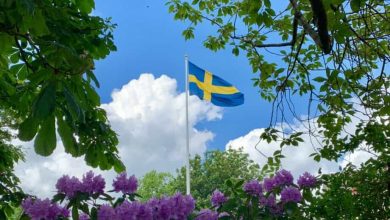A tour through the know-how of Brazilian women artisans
/ 2023-03-21 23:16:27
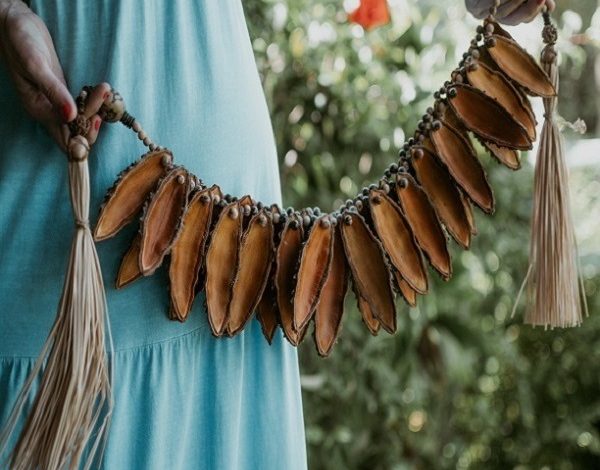
Diplomat.Today
Simone Scorsato
2023-03-21 23:16:27
——————————————-
Knowledge and culture were handed down from one generation to another by hands. This is a way of presenting the feminine heritage of handicrafts that exemplifies the authentic practice and knowledge in the different regions of Brazil. A history full of heritage from different settlers, combined with the local traditions of indigenous peoples, results in a diverse example of the creativity of Brazilian artisan production.
In Ceará, for example, Carmel Charme Resort (in Aquiraz) and Carmel Taíba Exclusive Resort (in Taíba Beach), to promote artistry and appreciate regionalism, they showcase the local cultural richness through many crafts and decorative items scattered about the hotels, all handcrafted by local artisans with exquisite care for detail and finish. Surprising creations of ceramics, straw and lace with their own identity add a touch of exclusivity and originality to the different spaces of both buildings.
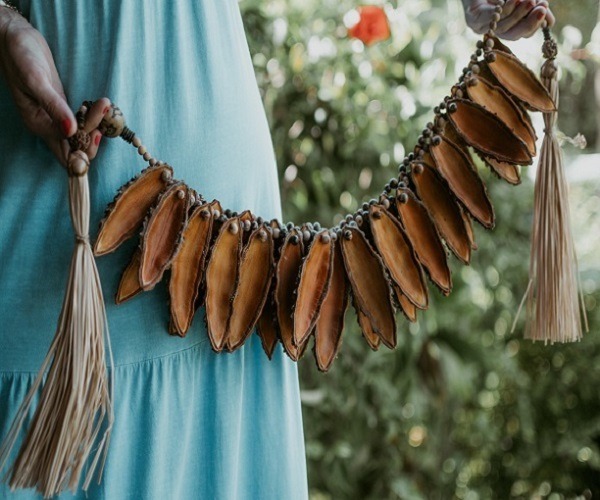
Also in the Northeast region, Madero Beach Hotel, in Tibau do Sul, appreciates the feminine heritage of handicrafts. The state of Rio Grande do Norte has a long tradition of craftsmanship, including embroidery, lace, weaving and pottery, with women as the protagonists, who have always played a key role in developing and preserving these traditions through the passing of skills and knowledge from mother to mother. to carry. daughter. Some of their craft techniques include bobbin lace, especially in Caicó; embroidery; pottery in Goianinha, with a large production of utensils, carvings and decorative items; handloom weaving of rugs, blankets, hammocks and duvets; and basketry, which uses various techniques to make hats, bags, baskets, mats, and other items from straw and fiber.
Pedras do Patacho Hotel, located in Porto de Pedras, Alagoas, is committed to the development of the local community and considers craft as an extremely valuable activity. The city’s craftsmen’s association creates works that help enhance Brazilian art and culture. Crocheted garments, paintings, costume jewelry, carvings, and items made from natural fabrics and materials, such as coconut and licuri straw, are part of the repertoire of women artisans.
In Bahia, specifically in Trancoso, Pousada Estrela D’Água houses the shop Também, which was founded with the idea of ”living on art”. Artists Silvana Delalana, Naná Lavander, Pati Santilli, Andra Frotte and Gal Gruman came together and designed the space with handcrafted pieces: items in macrame, crochet and knitwear, as well as necklaces, pottery, paintings, lamps and educational toys made by artisans of many different materials, such as wood, iron, straw and fabrics, most of which are recycled.
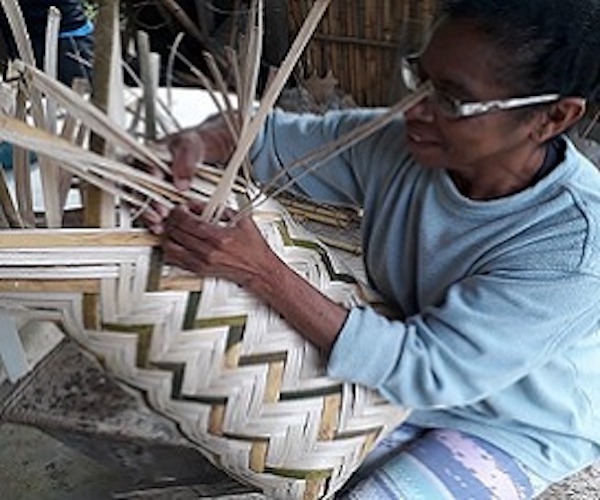
Pousada Literária (Paraty), Tutabel (Trancoso) and Trijunção (Cocos, Bahia) are lodges committed to regenerative tourism, which values territories from a social, cultural and environmental perspective. One way to do this is through the gift shops in each lodge, where all items sold are made by artisans from all over Brazil and curated in collaboration with NGO @artesol_aficial. A recognition that handicrafts help preserve the history and heritage of Brazilian families, in addition to creating socio-economic value. Examples include a quilombola family of women craftsmen living in Paraty, Rio de Janeiro, who make baskets and articles from natural straw using the technique of weaving cattail straw (taboa), an ancestral know-how that spans generations. The work, which is the community’s main livelihood, is done in the home of the matriarch, in the Fibra & Arte studio, where mother, daughter and sisters gather, as well as cousins, sisters-in-law and nieces, who also help according to their skills and demand.
Another inspiring example is the work of BioJoias Cores da Mata, created by Rodney Paiva Ramos, a female artisan since 2004. Born in Amazonas, she has incorporated sustainability into her works by using reclaimed wood and seeds (such as jarina, açaí and paxiubão ), collected by forest people, to make eco-friendly jewelry (necklaces, earrings, bracelets and bags).
IMPORTANT ANNOUNCEMENT:
If you are reading this article anywhere other than A Luxury Travel Blog, chances are this content has been stolen without permission.
Please note the web address above and contact A Luxury Travel Blog to notify them of this issue.
Thank you for helping us fight content theft.
traditional side
Handmade lace is present in different regions of Brazil. Bobbin lace (a traditional technique of braiding threads around wooden pegs to create complex patterns) is found in the Northeast, but the practice is also common in the South, particularly in Santa Catarina, along with other techniques.

In the south, more specifically in Florianópolis, the practice continues to this day, preserving a tradition dating back to the early settlers of the Azores archipelago. When visiting the city, it is easy to find works made by the skilled hands of the so-called rendeiras (lace makers). The activity is so important to the locals that there is even a date to celebrate bobbin lace: October 21. To keep the craft that is typical for the region alive, LK Design Hotel makes room for lace makers to exhibit their work.
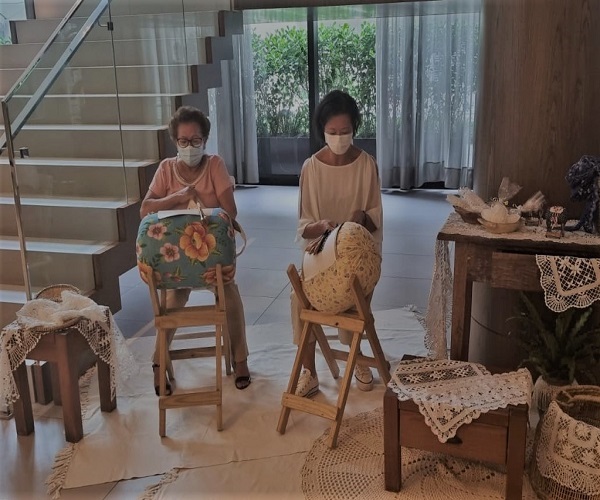
Also in the capital Santa Catarina, especially in the northern part of the island, a small community maintains the tradition. Worked on a grass-filled cushion, laces can be made in four stitch patterns: whole stitch, half stitch, foot, and braid, which is the most popular. Artisan Marli skillfully handles the spools to manually make perfect laces. For her, who inherited her mother’s talent and went on to teach her daughters, the practice historically brought women from her community into the workforce and at times provided the livelihoods of so many families.
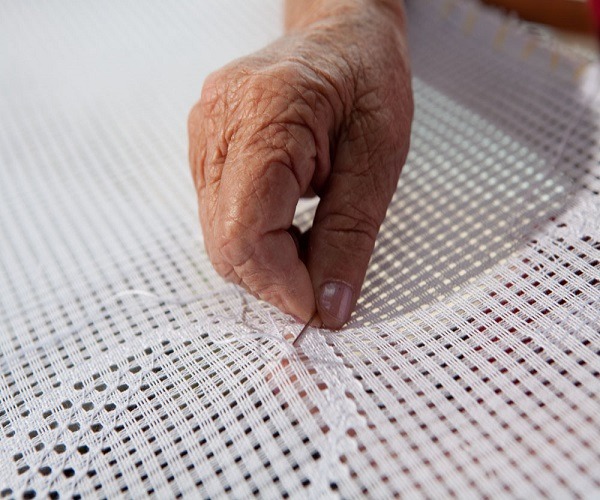
A few miles north of Florianopolis is a highlight in Governor Celso Ramos punchwork embroidery (crivo). Detaching, covering and sewing are some of the steps that women craftsmen cultivate to keep alive this technique brought from the Azores more than two centuries ago and passed down through generations. At Ponta dos Ganchos Exclusive Resort, Ruth exhibits her creations on a weekly basis to guests, who can purchase her work in the hotel’s boutique.
Simone Scorsato is Executive Director of the Brazilian Luxury Travel Association. BLTA’s main goal is to promote and strengthen Brazil as a travel destination in the global luxury market.
If you would like to become a guest blogger on A Luxury Travel Blog to boost your profile, please contact us.
——————————————-

